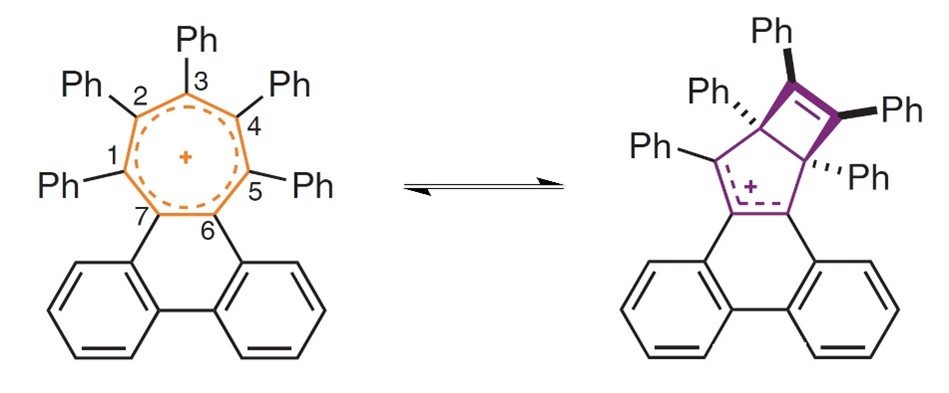Twisting Chemical Bonds Beyond their Limits
Recent research from scientists at the Universities of York and Durham twists molecules to their breaking point in order to challenge the understanding of chemical bonds.

Chemical bonding in aromatic molecules is key to the structure, stability and function of chemicals such as drugs and plastics. For a molecule to be termed ‘aromatic’, some of its electrons must flow freely around a ring in its structure. A classic example is benzene. Six of its electrons are shared around a ring of six carbon atoms.
Aromatic rings prefer to be flat. However, recent research has shown this isn’t always the case. When aromatic rings are strained, they become twisted. But how far can a ring be twisted before its aromatic bonding breaks?
The team of researchers, led by Dr Paul McGonigal, who recently joined the Department of Chemistry in York as a Reader in the Molecular Materials Group, have found an elegant way to answer this fundamental question. They achieved this by making overcrowded aromatic rings. Rather than benzene, they used tropylium, which shares electrons around a ring of seven carbon atoms. Each of these carbon atoms can be functionalised, and having seven attachment points in the ring rather than six allowed the researchers to cram more groups around the edge of the aromatic ring, causing more strain.
They found that low levels of overcrowding made the ring twist, but without breaking its aromatic bonding. Remarkably, the molecule could be twisted by 45° from one end to the other.
“In these overcrowded molecules, strain and aromatic bonding are delicately balanced,” said Dr Paul McGonigal. “The structure, properties, and potential applications of a material are ultimately determined by this balance.”
By adding progressively larger groups around the edge of the ring, the team twisted the ring further, eventually causing the aromatic bonding to break. The electrons no longer circle the seven carbon atoms and instead, the ring pinches across its middle to form two smaller flat rings (see Figure).
Surprisingly, the researchers found there is a balance point, where the ring jumps back and forth between aromatic structure and the two smaller rings. One molecule made in this study spends 90% of its time as the pinched structure and 10% of its time as a larger aromatic ring.
“The reversible pinching and reopening of an aromatic ring are truly remarkable,” said Promeet Saha, a PhD student in the McGonigal group and the lead investigator of this project. “Aromatic bonding is such a powerful stabilising force that we usually think of it being a constant presence. However, our findings demonstrate that it can be surprisingly dynamic.”
“The precise control over the twisting of our molecules is unprecedented,” added Dr McGonigal. “We were not only able to twist an aromatic molecule up to the maximum amount of strain it can tolerate, but also to discover what happens when we push beyond that limit. We hope this investigation is a step towards us being able to more routinely turn aromatic bonding ‘off’ and ‘on’ in a controlled manner.”
Dr Paul McGonigal works as part of the Molecular Materials Group in the Department of Chemistry at The University of York.
This research has been published in the journal Nature Chemistry The work was funded by the EPSRC.